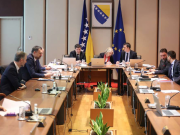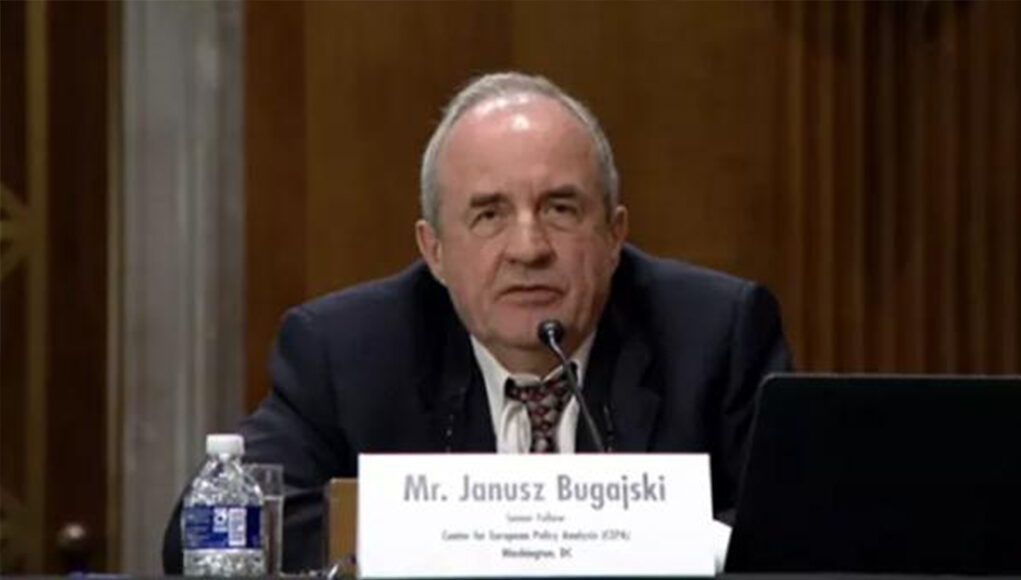Since the anti-civilian wars in a collapsing Yugoslavia in the 1990s, pursued primarily by Belgrade, the United States and the European Union have sought to ensure regional stability in the Western Balkans through border agreements, inclusive constitutions, and international integration. Such an approach has been challenged by corrupt politicians, weak institutions, the negative influence of hostile foreign powers, and mixed messages from EU bodies about Balkan inclusion. However, the biggest threats to regional security are the expansionist pan-national projects, especially when they are pursued by a state actor.
In recent years, the Greater Serbia project has been revived under the presidency of Aleksandar Vučić. But unlike during the Slobodan Milošević era, the agenda no longer revolves around outright war, ethnic murders, mass expulsions, and territorial capture. The campaign now operates through three main principles – stealth, flexibility, and patience. Under Milošević, an enlarged Serbia was supposed to emerge from a crumbling Yugoslavia by seizing territories containing Serbian majorities from neighboring republics and by murdering or expelling other ethnic groups to create Serbian majorities. The project failed largely because of the resistance of Croats, Bosniaks, Albanians, and Montenegrins, and eventual international military intervention led by the United States.
Vučić served as Milošević’s minister of information and is therefore very familiar with disinformation and deception to achieve grandiose political objectives. With his Progressive Party monopolizing Serbian politics and the opposition sidelined, Vučić has plenty of space to pursue Serbia’s mini-imperial Balkan ambitions. Belgrade’s current strategy involves three chief elements – weakening neighbors, duplicitous diplomacy, and Russian assistance.
Serbia is in no position to challenge Croatia, which has achieved both NATO and EU membership, although Belgrade continues to acquire weapons from Russia and China in a mini arms race with its richer northern neighbor. Croatia has a much smaller and less compact Serbian population than during the Yugoslav era and there are fewer political and economic vulnerabilities that Belgrade can exploit. The three main targets of the revived Greater Serbia project are Kosova, Montenegro, and Bosnia-Herzegovina.
Kosova cannot be reabsorbed by Serbia as there is no international support for such a reversal and the Albanian population is determined to remain independent. Belgrade’s objective is to indefinitely delay a final settlement or “normalization” in bilateral relations with Prishtina and keep Kosova unstable and uncertain about its future. Hence, the debates about partition and land swaps were not genuine but a means to distract attention and stir conflicts within the Kosovar leadership. A weak Kosova enables Belgrade to increase its regional leverage.
Although Montenegro is a NATO member, Vucic’s policy is designed to subdue its sovereignty and subordinate its foreign policy. Serbian officials and media interfered in Montenegro’s recent parliamentary elections to promote the nationalist opposition. The new governing coalition can weaken the country’s Western orientation, especially if the Democratic Front (DF) exerts dominance in the new government. The party is closely aligned with Serbian nationalist groups and Russian operatives and supports the Greater Serbia project. It will seek to strengthen Serbian identity in Montenegro and cancel the new religious property law. Bosniak and Albanian leaders will be especially concerned about rising Serbian chauvinism that could be directed against their communities in Montenegro.
Bosnia-Herzegovina is the third major target of pan-Serbianism. The country remains dysfunctional primarily because of the blocking policies of the autonomous Republika Srpska (RS). Its leader, Milorad Dodik, periodically threatens separatism to create a new Serbian state. The territory has a predominantly Serbian population following the war-time genocide of the Bosniak Muslims. Although Vučić has avoided openly campaigning for Bosnian partition and Serbia’s absorption of the RS, the calculation is that a wider regional crisis combined with conflicts within Bosnia will provide future opportunities for secession when the West is distracted.
A second key component of Belgrade’s approach is duplicitous diplomacy. While claiming aspirations to EU membership and closer relations with NATO, Serbia seeks to balance the four major powers – Russia, China, U.S., and EU. It aims to benefit from each, diplomatically, economically, and militarily, in imitation of Yugoslavia’s strategy of non-alignment after Tito’s rupture with Stalin in 1948. This can also disguise and assist the pan-Serbian project if Belgrade gains support from major international actors.
The third factor that Vučić calculates will help his Greater Serbian agenda is Russian state assistance. Moscow views Belgrade as a useful tool to undermine stability in the Western Balkans, limit Western integration, and expand Russian influence. Under Vučić’s presidency connections with Moscow have expanded. Serbia has signed a free trade agreement with the Moscow-led Eurasian Economic Union, despite strong opposition from the EU. It has refused to join the sanctions regime imposed against Russia for its invasion and partition of Ukraine. And it has acquired heavy weapons from Moscow, including anti-aircraft systems, fighter jets, and attack helicopters despite persistent warnings of U.S. sanctions.
Belgrade also continues to expand the “humanitarian center” in Niš in southern Serbia with Russia’s security services. The center enables Russian intelligence gathering throughout the Balkans. In the economic arena, Serbia maintains its reliance on Russian oil and gas. The second leg of Gazprom’s Turk Stream gas pipeline will traverse Serbia, which is already dependent on Moscow for natural gas and its biggest oil company, Naftna Industrija Srbije, is majority-owned by Gazprom. Serbia is increasingly exposing itself as a conduit for Moscow to destabilize South East Europe and challenge American interests.
Instead of direct confrontation that could provoke Western sanctions, Vučić prefers to operate by stealth and manipulate the vulnerabilities of neighbors. Instead of a direct assault on the integrity or sovereignty of nearby states, Vučić is more devious in diminishing their independence by encouraging nationalist disputes and favoring local pan-Serbian parties. And instead of a rapid pursuit of regional dominance, Vučić has opted to be patient, calculating that time is on Serbia’s side. However, it cannot be excluded that at some point the Kremlin may try to push or pull Vučić into a more direct regional conflict that will preoccupy both the EU and NATO.
Janusz Bugajski is a Senior Fellow at the Jamestown Foundation in Washington DC. His recent book, co-authored with Margarita Assenova, is entitled Eurasian Disunion: Russia’s Vulnerable Flanks, Washington DC.
































